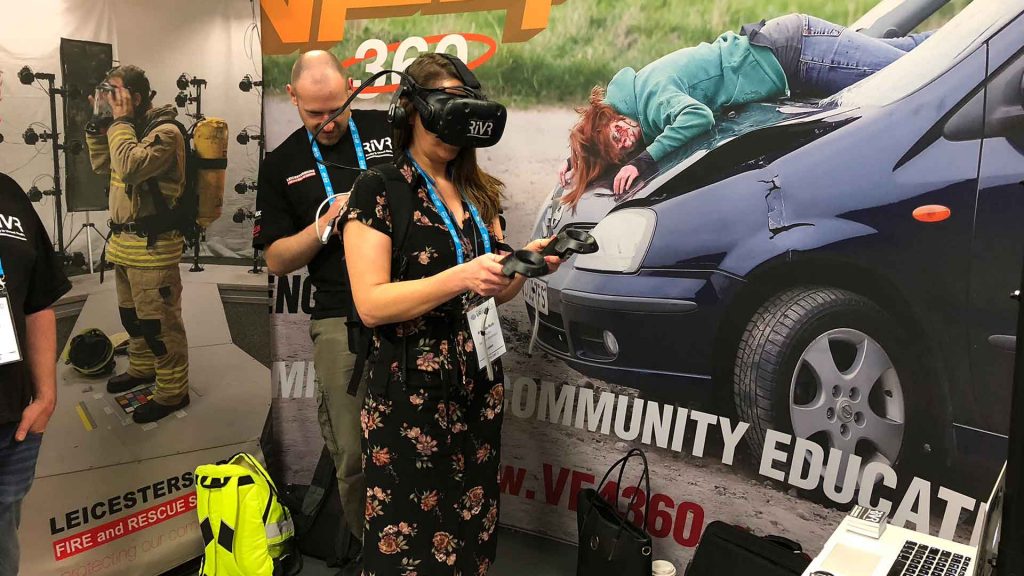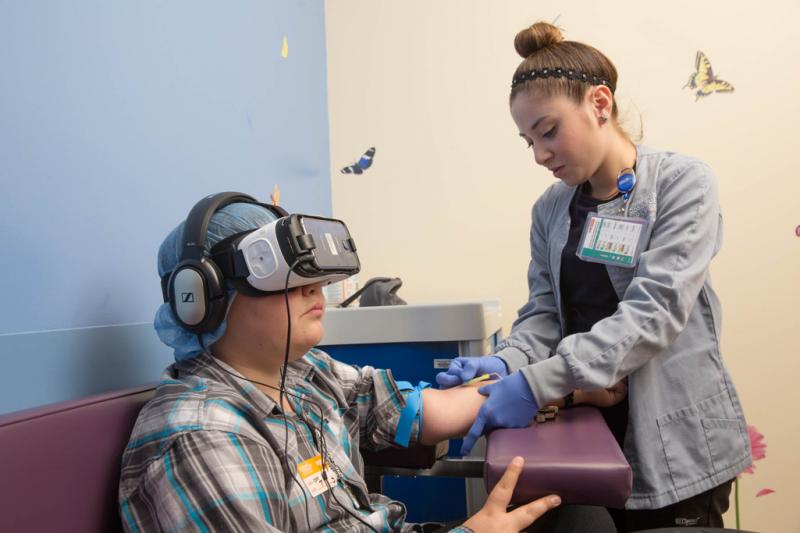More VR please.
We hear this request more and more often. There’s an insatiable appetite for the ultimate, unique, engaging live experience – so is Virtual Reality really the Holy Grail?

Immersive technology like VR is indeed impressive. It’s advancing rapidly, delivering more and more remarkable commercial and consumer experiences. It’s no wonder that VR has become a ‘must have’ item on an event planner’s wish list. ‘X Reality’ or ‘XR’ is now the collective term for technology-centric experiences that combine physical, digital and biometric realities such as VR, AR, AI, MR – and everything in between. Want to know more? Check out Milgram’s Virtuality Continuum for some light bedtime reading!
Nowadays, requests for XR are penned to the bottom of more event briefs than not. It’s as if an event isn’t worth the visit if it doesn’t feature an immersive experience of thrills and spills, takes visitors to an imaginary world of discovery, or scares the living daylights out of them! Though it’s true that companies like Samsung do an incredible job with VR at events such as Mobile World Congress, and XR is used to embellish many tourist attractions, such as the new experience at the Shard in London.
At 2LK, we’re lucky to see our fair share of technological advances before they hit the wider consumer market because clients like Intel, VMware and Dell are at the forefront of real-time data – the basis of this platform in a commercial sense. Testament to this is our latest showreel on all things XR that includes The Wonderwall, its 2.0 iteration The Wondercube, VMware’s Internet of Things offerings and more.
But can a blind thirst for the ‘Wow factor’ override the real message? Let me be100% clear – without great content, great tech kit is nothing. Nada.
Over the years, the battle cry from clients was “we must have a _______ on our booth” (insert PDP plasma wall, HD screen, 4K display, 3D TV, LED wall). And now it’s VR. What’s always fascinated me is that the craving for the latest tech is very rarely accompanied by a comprehensive brief with an idea, message or strategy for content that will engage and connect the audience with the brand and vice versa.
My advice to anyone who wants to commission an immersive experience at live events is simple – follow these two basic rules:
Rule 1: Always spend more time, effort and money on content, message and idea than on hardware.
Rule 2: See Rule 1!
A recent trip to VR World London really drilled this point home to me. The industry needs to move away from ‘tech wonderment’, and instead concentrate on great content, user experience and the resultant benefits. Focus on what the engagement affords and the value it provides, because reliance on the novelty of tech results in it becoming a fad. And we all know how quickly novelty wears off.
XR/VR (and the content/message) truly come into their own when used for social good or educational purposes. Like the Alzheimer’s Society’s simple but effective 360 VR journey of what life’s like with the dementia. Cost effective, powerful and thought provoking. Or the UK Fire Service’s collaboration with RiVR to build a VR experience that enables the emergency service to train whilst in safer surroundings.

The use of XR as a therapeutic tool for mental health care and physical disabilities is also hugely beneficial, with the medium’s ability to immerse users into another world to provide respite from their conditions. And it works – a study by Cedars-Sinai found that VR helped reduce the pain hospital patients reported by almost 25%, on average. But perhaps the most heart-warming VR application I’ve seen is the VR Vaccine, used to calm down children whist getting vaccinations, which won Gold at Cannes Lions. I certainly wish this was available on all those trips to the doctor with my own kids!

© Jeffrey I. Gold, Ph.D
Back in the world of live events and experiences, we’re not quite there yet. Budgets and timeframes undoubtedly influence this, but I hope that Event Managers take inspiration from these incredible stories to prioritise content in order to deliver a credible, relevant and informed message through this exciting, innovative medium.
More reading:
5 Cs of AI and live brand experiences.